In order to generate a more inclusive dataset of Pseudomonas genes mapped to putative in-paralogs and putative orthologs in other Pseudomonas species/strains, we developed a Pseudomonas Orthologous Groups classification system.
To generate ortholog groups, pair-wise DIAMOND searches were run on all genomes in the database to find reciprocal best hits (RBHs) for each gene. These analyses often resulted in multiple candidate genes for RBH status, which were narrowed down by examining the similarity between the query's flanking genes and the hit's flanking genes. If two candidate genes were directly adjacent, they where both accepted as RBHs that involve putative in-parology.
Pairwise intra-genome DIAMOND searches were also performed to acquire in-paralog information (i.e. gene duplications occurring after species divergence). If two genes in one genome were reciprocally more similar to each other than to any gene in the other genomes, the two genes were designated putative in-paralogs. Ortholog groups are built by starting with a seed gene and then adding all genes to which there is a RBH or in-paralog relationship.
Every new gene added to an ortholog group was then treated as a seed gene and the addition process was repeated until all qualifying genes had been added. The result was the development of orthologous groups, specifically generated for Pseudomonas species genomes, which can be used to sort search results.
Pseudomonas Ortholog Group POG003479
| Strain | Locus Tag | Description | Same-Strain Members | Fragment ? | |
|---|---|---|---|---|---|
| Pseudomonas aeruginosa BWHPSA016 | Q029_01313 |
double-glycine peptidase
|
2 same-strain members: Q029_01106 Q029_01313 |
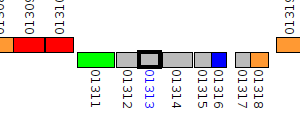
|
|
| Pseudomonas aeruginosa BWHPSA017 | Q030_00574 |
peptidase C39
|
2 same-strain members: Q030_00372 Q030_00574 |
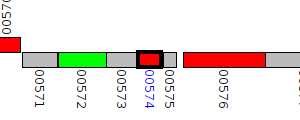
|
|
| Pseudomonas aeruginosa BWHPSA017 | Q030_00372 |
peptidase C39
|
2 same-strain members: Q030_00372 Q030_00574 |

|
|
| Pseudomonas aeruginosa BWHPSA018 | Q031_00786 |
peptidase C39
|
2 same-strain members: Q031_00786 Q031_00991 |
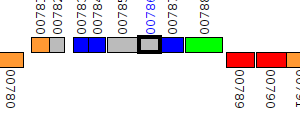
|
|
| Pseudomonas aeruginosa BWHPSA018 | Q031_00991 |
peptidase C39
|
2 same-strain members: Q031_00786 Q031_00991 |
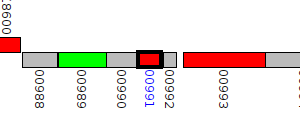
|
|
| Pseudomonas aeruginosa BWHPSA019 | Q032_00317 |
peptidase C39
|
2 same-strain members: Q032_00317 Q032_00522 |
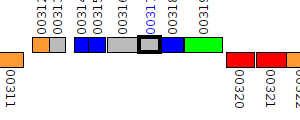
|
|
| Pseudomonas aeruginosa BWHPSA019 | Q032_00522 |
peptidase C39
|
2 same-strain members: Q032_00317 Q032_00522 |
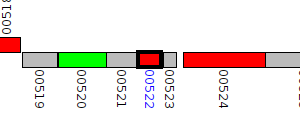
|
|
| Pseudomonas aeruginosa BWHPSA020 | Q033_04945 |
peptidase C39
|
2 same-strain members: Q033_04945 Q033_02999 |
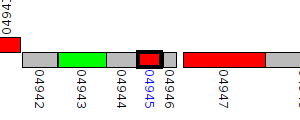
|
|
| Pseudomonas aeruginosa BWHPSA020 | Q033_02999 |
peptidase C39
|
2 same-strain members: Q033_04945 Q033_02999 |
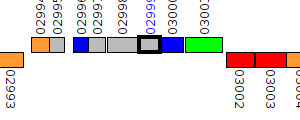
|
|
| Pseudomonas aeruginosa BWHPSA021 | Q034_02439 |
peptidase C39
|
2 same-strain members: Q034_02439 Q034_02642 |
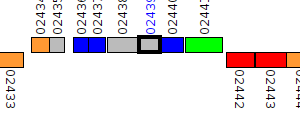
|
|
| Pseudomonas aeruginosa BWHPSA021 | Q034_02642 |
peptidase C39
|
2 same-strain members: Q034_02439 Q034_02642 |

|
|
| Pseudomonas aeruginosa BWHPSA022 | Q035_01206 |
peptidase C39
|
2 same-strain members: Q035_01206 Q035_01494 |
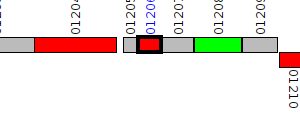
|
|
| Pseudomonas aeruginosa BWHPSA022 | Q035_01494 |
peptidase C39
|
2 same-strain members: Q035_01206 Q035_01494 |
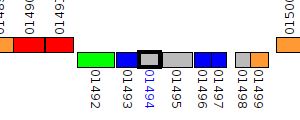
|
|
| Pseudomonas aeruginosa BWHPSA023 | Q036_00722 |
double-glycine peptidase
|
2 same-strain members: Q036_00722 Q036_00924 |

|
|
| Pseudomonas aeruginosa BWHPSA023 | Q036_00924 |
peptidase C39
|
2 same-strain members: Q036_00722 Q036_00924 |

|
|
| Pseudomonas aeruginosa BWHPSA024 | Q037_03162 |
peptidase C39
|
2 same-strain members: Q037_03162 Q037_03365 |
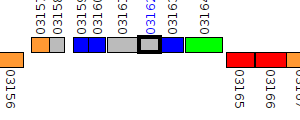
|
|
| Pseudomonas aeruginosa BWHPSA024 | Q037_03365 |
peptidase C39
|
2 same-strain members: Q037_03162 Q037_03365 |
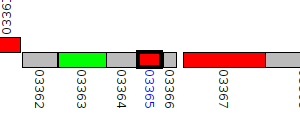
|
|
| Pseudomonas aeruginosa BWHPSA025 | Q038_01119 |
peptidase C39
|
2 same-strain members: Q038_01119 Q038_01321 |
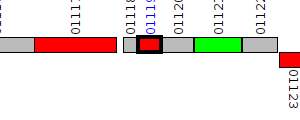
|
|
| Pseudomonas aeruginosa BWHPSA025 | Q038_01321 |
peptidase C39
|
2 same-strain members: Q038_01119 Q038_01321 |

|
|
| Pseudomonas aeruginosa BWHPSA026 | Q039_04993 |
peptidase C39
|
2 same-strain members: Q039_04993 Q039_05195 |

|